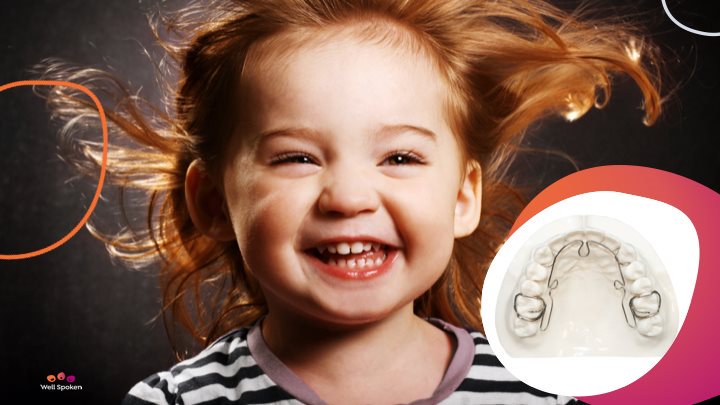As I’ve shared earlier on a blog, myofunctional therapy is a therapeutic technique used to educate, or re-educate, the muscles of the mouth face and throat. By optimising the way those muscles are used in daily life, for day-to-day activities like breathing, chewing and swallowing, we can promote a healthy airway. We do this, along with making sure the airway is healthy and clear. There are many other ways to optimise our airway, which help kids to grow to their full potential. There are fun activities like humming, doing ‘mini beat-box’, and mouth work outs akin to lifting weights with the tongue. Yes, its true! In fact, not activating the muscles optimally can lead to both poor airway development and poor airway function. This can have lasting impacts on a child’s life and health.
When the muscles of the mouth face and throat aren’t working optimally– and are having a negative impact on kids’ sleep, remember any audible breathing or mouth breathing during the night signals non optimal breathing that can disrupt sleep. So too, is quiet breathing but with a head extended back. So, the next question is, how do we train the airway muscles to work the way they are supposed to? How do we create new habits that encourage build better tone in those upper airway muscles, like teaching the tongue to rest on the roof of the mouth, the lips rest together and nice straight body posture. How do we encourage great ‘rest postures’ along with optimal breathing, chewing and swallowing to develop and maintain a healthy upper airway?
At Well Spoken, we recommend a range of exercises to train children to use their muscles correctly. These are called resistance exercises designed specifically to target the muscles of the throat. However, there are also a range of appliances available to help train these muscles.
So, what are these appliances? Are there benefits to using them? And are there risks? Keep reading to get all of your questions answered.
What appliances can assist myofunctional therapy?
Myofunctional appliances are devices that are placed in the mouth to support healthy function and growth. Applying force to the bones e.g. with chewing helps to grow the bones! This in turn supports development of the upper airway, essential for kids to breathe and sleep well.
Depending on the device, it might be removable (like a mouthguard), or it might be fixed to the mouth for a certain amount of time (like braces).
Here are some examples of ‘myo appliances’ that can be recommended and fitted by a skilled and trained ‘Myofunctional Practitioner’ (by the way, kids love these 😊
- Chew Noodles: this is hand-held long thick silicone pliable tubing used to munch, chomp and chew on, from the molars to the incisors.
- Myo Munchee: The Myo Munchee is a chewing appliance, which kids simply chew on. Regular chewing then helps develop the orofacial muscles, which can improve sleep, along with addressing speech problems, gum problems and crooked teeth. Munchee is a chewing appliance, which kids simply chew on. Regular chewing then helps develop the orofacial muscles, which can improve sleep, along with addressing speech problems, gum problems and crooked teeth.
Here are some appliances that can be recommended and fitted by a skilled and trained Dentist or Orthodontist:
- ALF: The Advanced Lightwire Functional Appliance is an orthodontic appliance that expands the upper jaw and promotes changes in muscle function, which can help open the airway, improve posture and reduce occlusion.[Links]
- Myo-Brace: This is a tooth brace that is worn overnight and for 1-2 hours during the day. It helps develop and align the jaws, straighten teeth and develop the facial muscles by encouraging correct tongue resting position and breathing through the nose.
- Myo-Talea: Tongue lips and jaw exerciser
- Crozat: a precious-metal removable appliance and developed to correct malocclusions and dentofacial deformities
- Healthy Start: non-invasive, non-pharmaceutical, pain-free approach to opening the airway and straightening teeth without braces
- Talk to your dentist about what options they can provide to promote early airway growth, there are many appliances and solutions for this.
Why use myofunctional appliances?
If the focus of myofunctional therapy is teaching people to use their orofacial muscles correctly with exercises, is there any benefit to using myofunctional appliances?
The short answer? Yes. As someone who works with kids on myofunctional exercises on a daily basis, I feel appliances do have their place.
Appliances create more room in the mouth faster than myofunctional interventions can. Nature’s perfect orthodontic appliance is the tongue and, before the age of five or six, the maxilla (upper jaw) is so soft and malleable that it can be moulded by the tongue. When this is proving difficult, or the child is slightly older, myofunctional therapy might be more effective when used in conjunction with an appliance.
At Wellspoken, our focus is normalising all the upper airway functions – breathing, chewing, swallowing, head-neck posture, and more. As part of chew therapy, I frequently use an adjunctive chew appliance – whether that is a Myo Munchee or a chew noodle – with the goal of helping kids transition from this appliance to chewing everyday on crunchy, chewy foods properly.
One of the things I like about a Myo Munchee is it’s very affordable, and kids have a lot of fun doing it. It assists in normalising chewing as well, as an adjunctive appliance. I also love that it’s designed by a dentist and it does a whole lot of other things e.g. it cleans the teeth at the same time and encourages active lip closure.
With an appliance, once those myofunctional foundations (breathing, chewing, and swallowing) are in place, we can then move on to speech, voice, resonance or whatever functional disorder is presenting.
In some cases, myofunctional therapy and appliances can even help kids avoid procedures like frenectomies. This is something we see often: where a tongue looks restricted but after a period of therapy it resolves and a frenectomy is no longer necessary.
Are there any risks when using myofunctional devices?
If you are using devices developed by medical professionals that are made of safe materials, like medical-grade silicone, the risks of using these devices are minor. However, I would say that there are considerations to keep in mind when starting a treatment program with any new device.
There are lots of appliances and lots of systems available to facilitate optimal genetic potential for growth of the jaws and a healthy airway, particularly focussing on the upper jaw. Because I come from a functional perspective, my first question is always if there is enough space for the tongue to move with an appliance in place.
Devices should allow plenty of room for the tongue to move freely and for chewing to be normal. Something to look for is whether part of that appliance is covering the maxilla, or whether the maxilla is completely free to allow the tongue to fully rest in the maxilla and do its work at the same time as the appliance.
With all the right things in place for ideal dental and occlusal development, you are laying the foundations for a well-developed airway. If we bring it back to sleep, a well-developed airway is fundamental to good breathing in sleep. And the earlier we start, the better.
There’s a really important role for appliances and helping with some expansion. But we need to focus on the entire structure of the face, mouth and airway, not simply the upper jaw.
With this in mind, it’s important to ensure that the lower jaw keeps up with the upper jaw expansion because, if it doesn’t, then you don’t have interdigitation for effective chewing. And effective chewing is nature’s perfect design for developing the jaws and teeth to their genetic potential.
So in terms of appliances, if there’s an appliance system that does both – facilitates jaw growth and facilitates healthy interdigitation – that appliance is the winner.
Looking for more?
Let’s build a new generation of healthy sleepers!
With my book Sleep-Wrecked Kids, I support you to become the lifeguard of your child’s sleep. Packed full of information and practical help, it will get you on the way to good sleep for all the family. Order your copy here!



